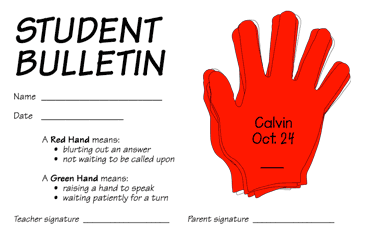Madeline Hunter, an education theorist, is credited for coining this term.
Dipsticking, as a teaching strategy, is a metaphor for checking for understanding. Car engines contain a dipstick to check the oil supply. It is used to determine if more oil needs to be added to the car. Dipsticking in teaching does the same thing and it takes very little time. Dipsticking is used frequently during instruction and on the same topic or concept to check on students' understanding to see if more instruction is needed before moving on. This can be done by asking questions throughout the lesson to the whole class. If the students consistently answer the questions correctly, then the teacher can assume that the lesson is going well.There are two types of dipsticking: student self-evaluation, and direct content checks. Some examples of quick student self-evaluations are asking your students to nod their heads if they’re with you, or to ask for a thumbs-up or thumbs-down signal to indicate how well they understand a concept that has just been presented. However, the one significant problem with self-evaluation is that the audience may think they understand your content material when they actually don’t.
Hence, direct content checks that quickly evaluate recall and comprehension of the material presented may be provide the clearest answers for the teacher. For example, create a brief oral true/false quiz and have the whole class respond with a thumbs-up or thumbs-down signal. Remember, the entire class must be answering the question for you to be able to make a correct visual assessment of their understanding. Too many teachers rely on a correct answer from a single student and assume that the rest of the class gets it.
Whenever you reach a benchmark in your instruction, or a certain point where the entire class should understand some content information or risk being lost for the rest of the lesson, be sure to dipstick!! You’ll give yourself the opportunity to correct misunderstandings and keep your students with you consistently throughout your lesson.
Please share this link with colleagues and friends.
Consider becoming a "Follower", if you haven't already.
Best Effort,
Linda103
Please share this link with colleagues and friends.
Consider becoming a "Follower", if you haven't already.
Best Effort,
Linda103
